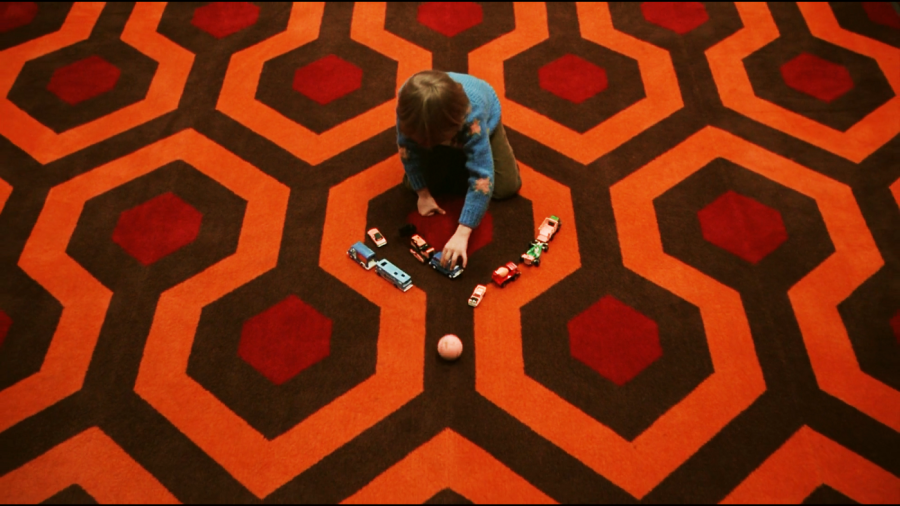I Watched 20 Horror Movies Last Month: These Were The Standouts
November 7, 2022
Earlier this year, I made a goal for myself to become more familiar with cinema. Specifically, I thought October would be a great time to catch up with the horror genre, so with the guidance of my better-advised friends, I made a list of 31 movies, 20 of which I watched this past month. I assembled this list through Letterboxd, a movie logging and reviewing website, listing recommendations from friends and family, popular favorites, and high-rated classics. I watched from oldest to newest, which in retrospect was a great method, as I was able to observe the cultural progression and revolution throughout the different eras. I also made sure to exclude films I’d already seen in full. I’ve never quite been the most interested in horror specifically, meaning that my experience with true horror media before this point remained widely unexplored. Therefore, although I can be easily entertained, to have these films strike me so positively on the first impression is truly impressive! Here were my favorites, ranked lowest to highest:
The Blair Witch Project (1999) – 8.25/10
HIGHLIGHTS: creativity, camera work, mood
Summary: Three student filmmakers set off into the woods with the anticipation of documenting a local legend, but are unaware of just how real the danger is.
A pioneer of today’s found footage/analog horror, Blair Witch’s raw realism gets under your skin in a uniquely chilling way; I watched this in the dark and was left absolutely stilled by the end of it. While over time it has garnered polarized reviews for its ambiguity, either way, I think that this genre is worth checking out, and this film is a fantastic introductory classic. I do personally wish it had leaned a little more into the scary bits earlier on; although it maintains a general (and effective) tense feeling throughout the film, it is still VERY slow-burn. However, due to the strength of the characters’ emotions and its amateur film format, it succeeds very well as a psychological horror.
Halloween (1978) – 8.5/10
HIGHLIGHTS: direction, score/theme (John Carpenter); cinematography
Summary: Michael Myers, after spending 15 years in a mental institution for the murder of his teenage sister, escapes to stalk and kill new victims in his hometown of Haddonfield, Illinois.
In regards to how each subplot unfolds, I found this one to be a little disjointed at first, though that doesn’t take away from its innovative slasher composition. Carpenter does a great job with both the direction and score of this film; although the theme resurfaces fairly often, it was good enough to keep me on edge and excited each time. The pacing is a bit outdated (moving quickly from mundane to overly terrifying was a formula I observed to be quite popular at the time), but the film is still incredibly tense and suspenseful; I jumped every time I was supposed to jump, and I still felt engaged during the less interesting scenes. I didn’t realize this movie was as old as the 70s before I made this list; it really is just that influential to other movies in the genre, and understandably so! Overall, it’s an awesome representation of classic horror, and perfect for the season.
The Thing (1982) – 8.5/10
HIGHLIGHTS: direction (John Carpenter), score, practical effects
Summary: Research scientists in remote Antarctica have their base rocked by the presence of a shapeshifting alien that picks each crew member off one by one.
I thought that this movie was shockingly similar to Alien (which landed higher in my ranking); it even adopts a similar pacing, with much of the action taking a little bit to pick up (albeit faster than its predecessor). That being said, this definitely takes itself less seriously than Alien while still being very good. Personally, I’d favor Alien over this one for its twists and more dimensional characters, though both films are very well-made and certainly worth the acclaim. This film shares many strengths with Halloween, like score, editing, and cinematography, most likely due to their shared director. Surprisingly, the practical effects are still much more unsettling than goofy even 40 years later; it’s almost welcoming since you don’t see so many well-done practical effects as often in film anymore!
Get Out (2017) – 9/10
HIGHLIGHTS: direction (Jordan Peele), lead actor (Daniel Kaluuya), story/twist, editing
Summary: While Chris expects some awkward hostility toward his interracial relationship with his girlfriend, he is unprepared for what he uncovers during his visit with her white family.
Already, there is nothing to say about this film that hasn’t already been said; it’s so artfully written and directed, with every little detail serving a purpose. I found myself catching small particulars like the color scheme, the camera flash, and the lion on the dresser and looking them up for explanations, which all of them had. Get Out is both a visually and psychologically appealing movie; it makes this list not entirely for its scare factor, but for its crafting. The horror tropes it does incorporate work so well here because they are specifically used to get all audiences to empathize with the protagonist and understand the true horrors of systemic racism, whether they are personally affected by it or perpetrators themselves.
Hereditary (2018) – 9/10
HIGHLIGHTS: lead actress (Toni Collette), soundtrack, camera work, editing
Summary: After the death of the family matriarch, her daughter and her family uncover her deepest secrets through their tumultuous spiral into a world of grief.
A film only slightly less cursed than 2019’s Midsommar and one that I found more structurally compelling, Hereditary presents a beautifully chilling narrative with dazzling performances, particularly from Toni Collette, and unnervingly appealing cinematography. Ari Aster’s projects are overall something I’d truly recommend for their incredibly surrealist qualities; while they may not be enjoyed by everyone, their presentation alone is fascinating. The third act of this movie probably put me more on edge than any of these other films, or at least in a more unique way than the rest of them. It peaks at the very end in a series of the most confusing and horrifying scenes you’ll ever see. Its formula is almost that of a mystery for how it sprinkles breadcrumbs before absolutely unraveling at the seams at the finale, and it’s positively brilliant.
Alien (1979) – 9.25/10
HIGHLIGHTS: set, camera work, coloring, lighting
Summary: The crew of a commercial spaceship finds themselves up against an aggressive and deadly extraterrestrial set loose onboard.
I was surprised that I enjoyed this as much as I did, especially being someone who appreciates but doesn’t really get or enjoy sci-fi adjacent media. This film utilizes incredible world-building and terrifying immersion; it honestly felt like a theme park ride, which is incredibly difficult to do when most contributions to this genre at the time just seemed to follow in the footsteps of A New Hope. Even in the more confusing beginning, it’s just so nice to look at; luckily, after the first hour it picks up with an unreal pacing and unpredictable series of events.
The Shining (1980) – 9.25/10
HIGHLIGHTS: performances, cinematography, editing, imagery, twist
Summary: Writer, husband, and father Jack Torrence descends into madness while overseeing the Overlook Hotel during its offseason, the duration of which is chronicled over his family’s stay.
The acting from everyone in this film is remarkably powerful, the score is incredible, and the ambiance is absolute perfection and so fitting. I refrained from giving this a higher score, mainly for the few and far-between weird moments that I’m sure have a purpose but were just very odd upon the first watch. That being said, this is the one I wanted to revisit the most; you can truly feel the craftsmanship when you watch. The Shining offers countless Easter eggs and small details that leave you constantly analyzing every peculiarity. Its unique horror appeals and layered plot give this film an unmatched timeless complexity that really makes you feel like you’re watching recently released content.
Psycho (1960) – 9.5/10
HIGHLIGHTS: direction (Alfred Hitchcock), lead actors (Janet Leigh, Anthony Perkins), score, screenplay
Summary: A woman’s coworker asks her to bank $40,000 for his daughter, but she runs off with the money instead. The next day, she is taken in by a stuttering motel keeper off an abandoned highway, and a local detective looks into the missing person’s case.
Considering its ‘classic’ status, this film was even better than I thought it would be and so incredibly deserving of the abundance of praise and recognition it’s gotten throughout the years. From the dazzling performances to Hitchcock’s iconic direction style to the fascinating story and engaging pacing, most aspects were practically perfect. This one was definitely a standout and absolutely worth watching, especially if you’re interested in general cinema and even if you find most classics boring (this film definitely shatters that stereotype). The score and sound design of this film are also exceptional. Being able to kill the heroine halfway through and still match the suspense in the second portion is in itself an incredible feat. Not only is it the most pivotal film in its genre, but it has also managed to stand the test of time and entertain audiences more than 60 years later.
UNLISTED (most to least favorite): Scream, Les Yeux Sans Visage, Midsommar, The Exorcist, A Nightmare on Elm Street, Rosemary’s Baby, The Conjuring, The Texas Chainsaw Massacre, Poltergeist, It (1990), Friday the 13th, The Amityville Horror


